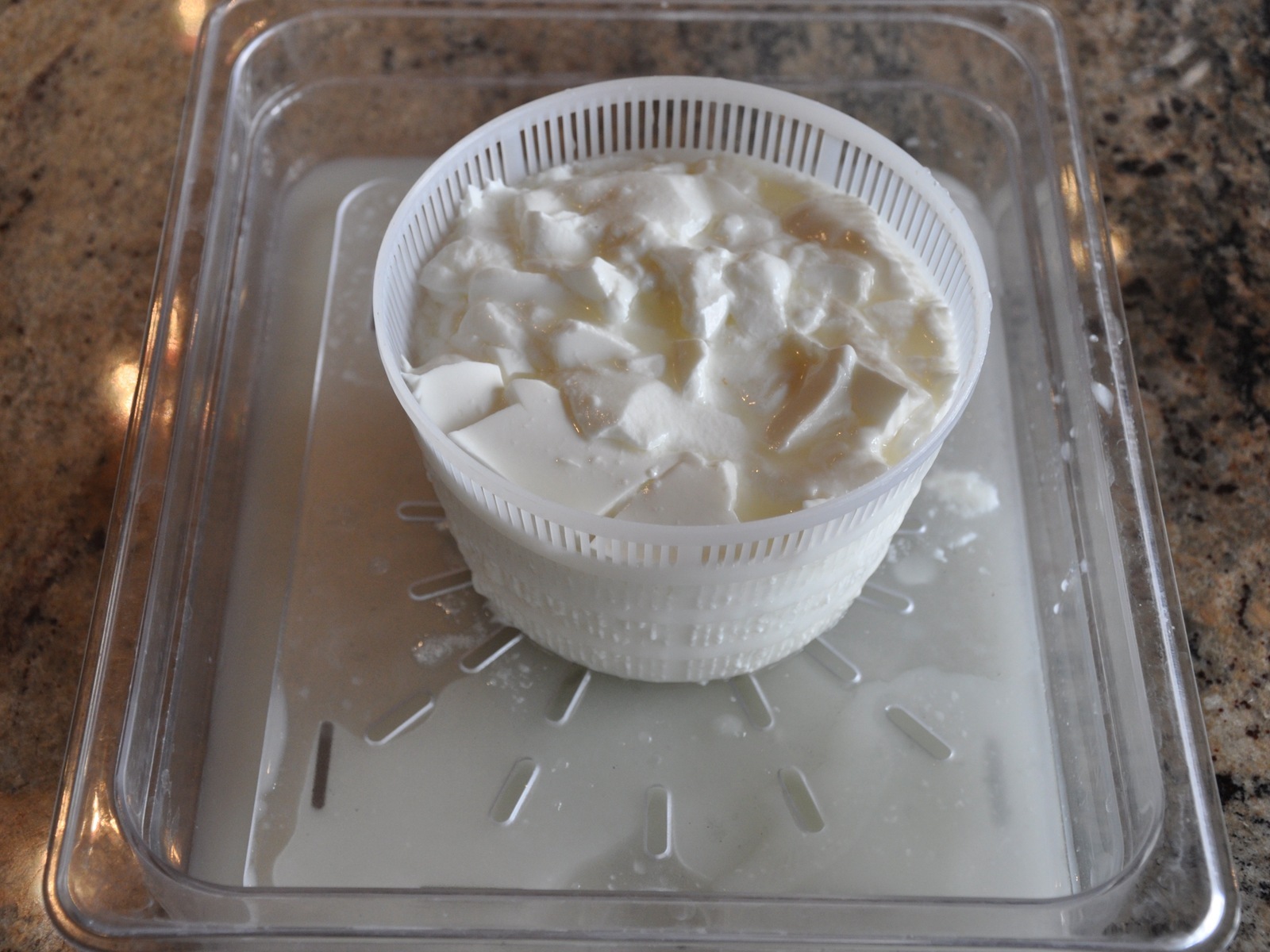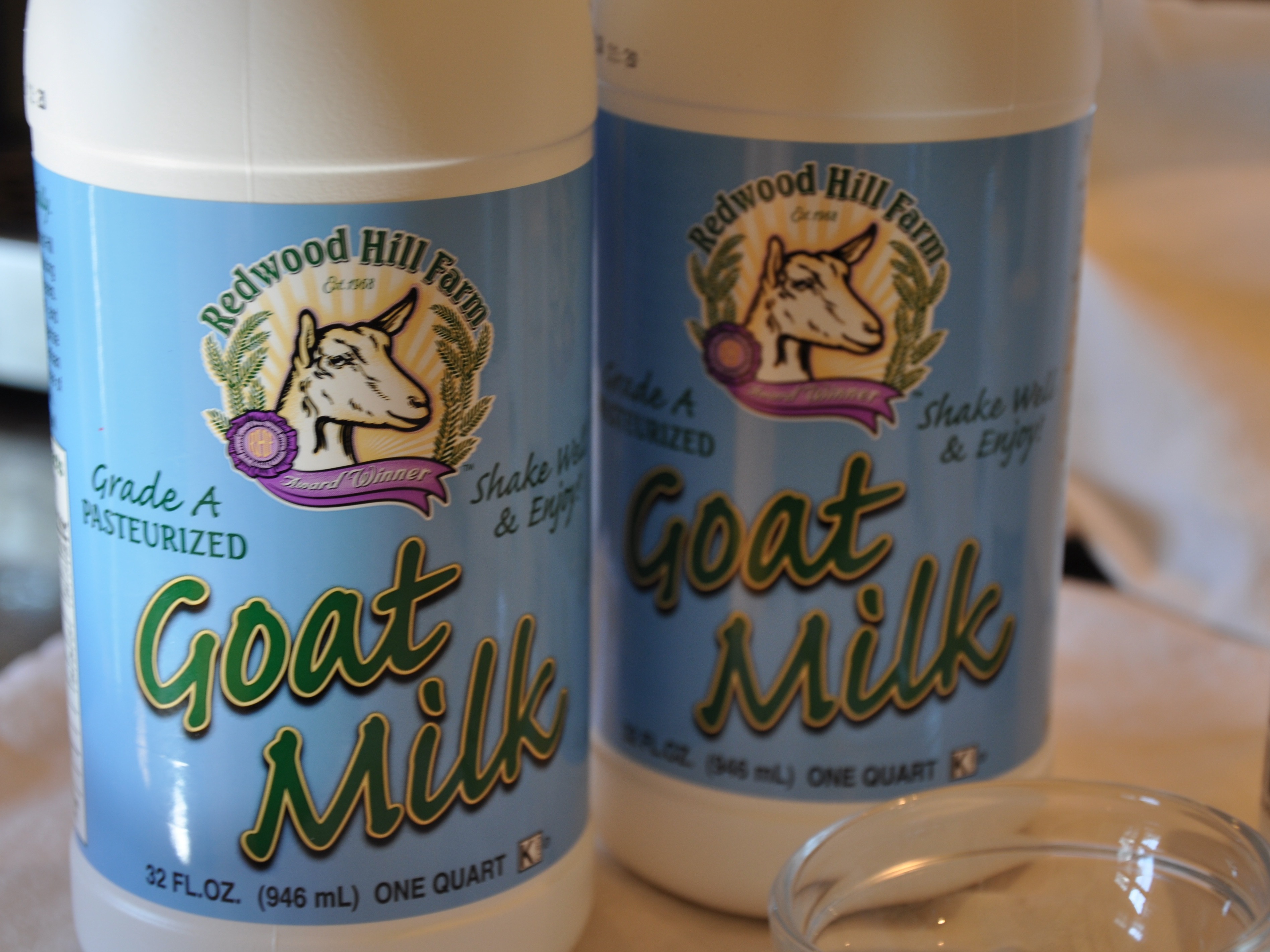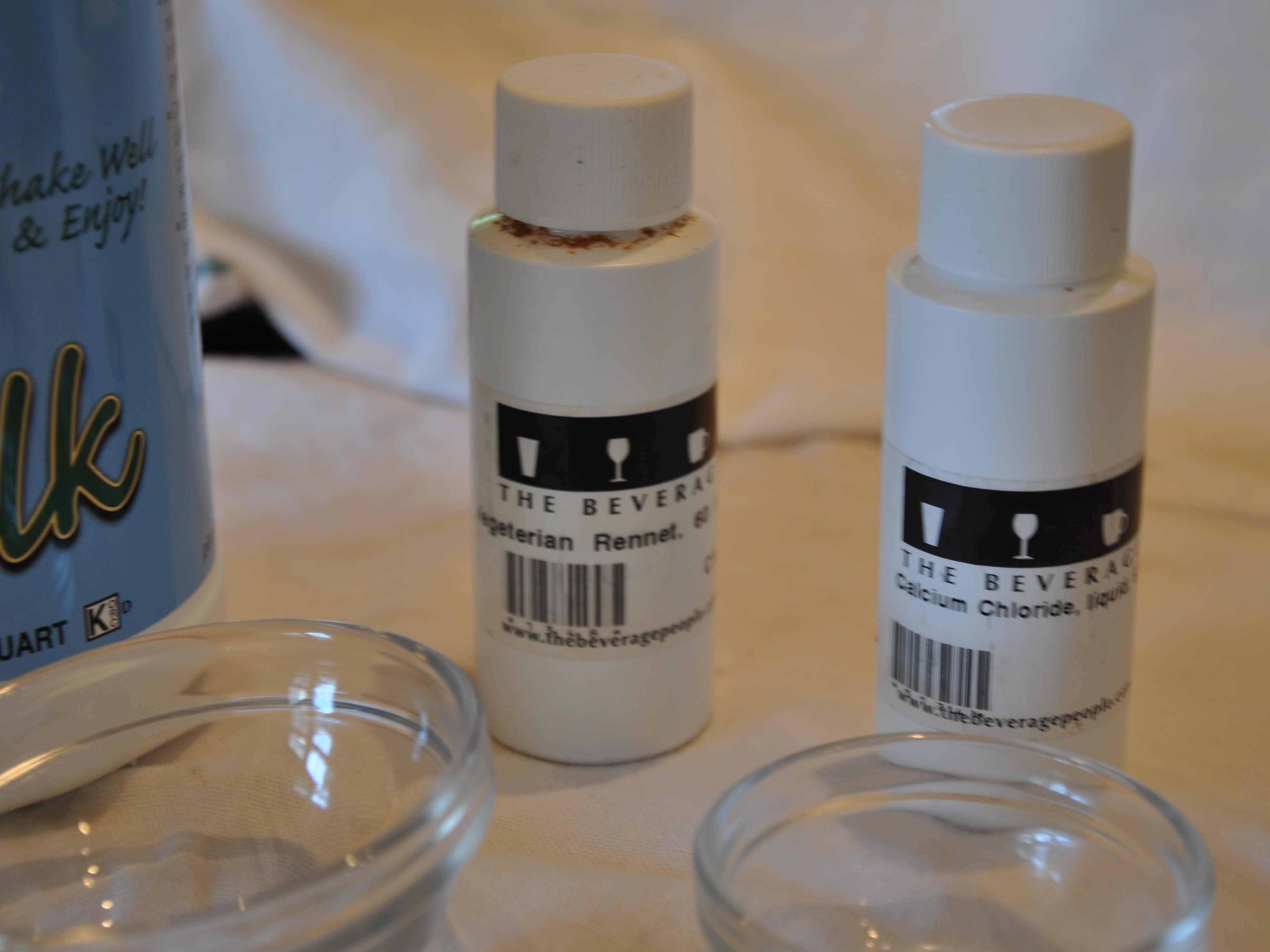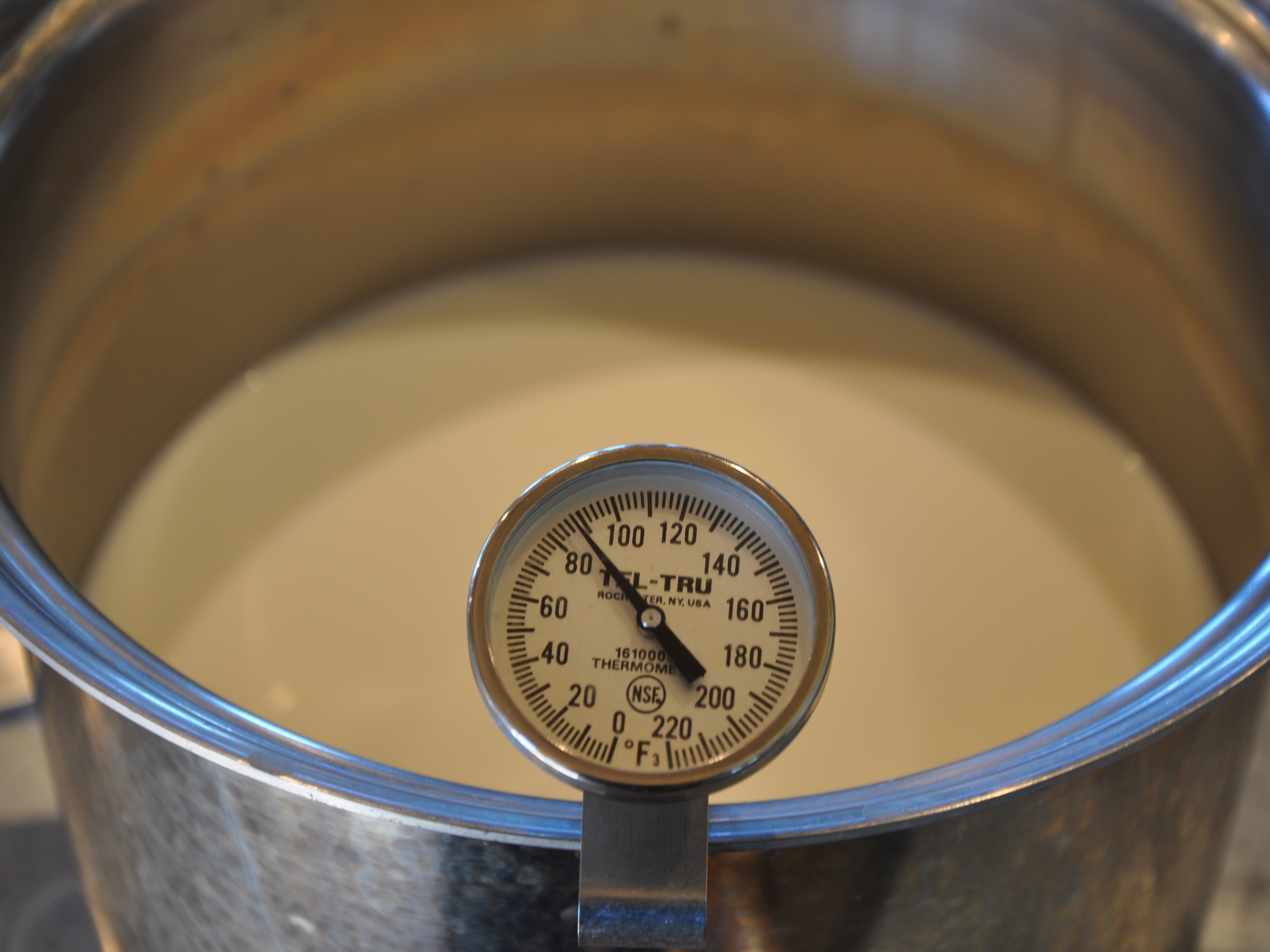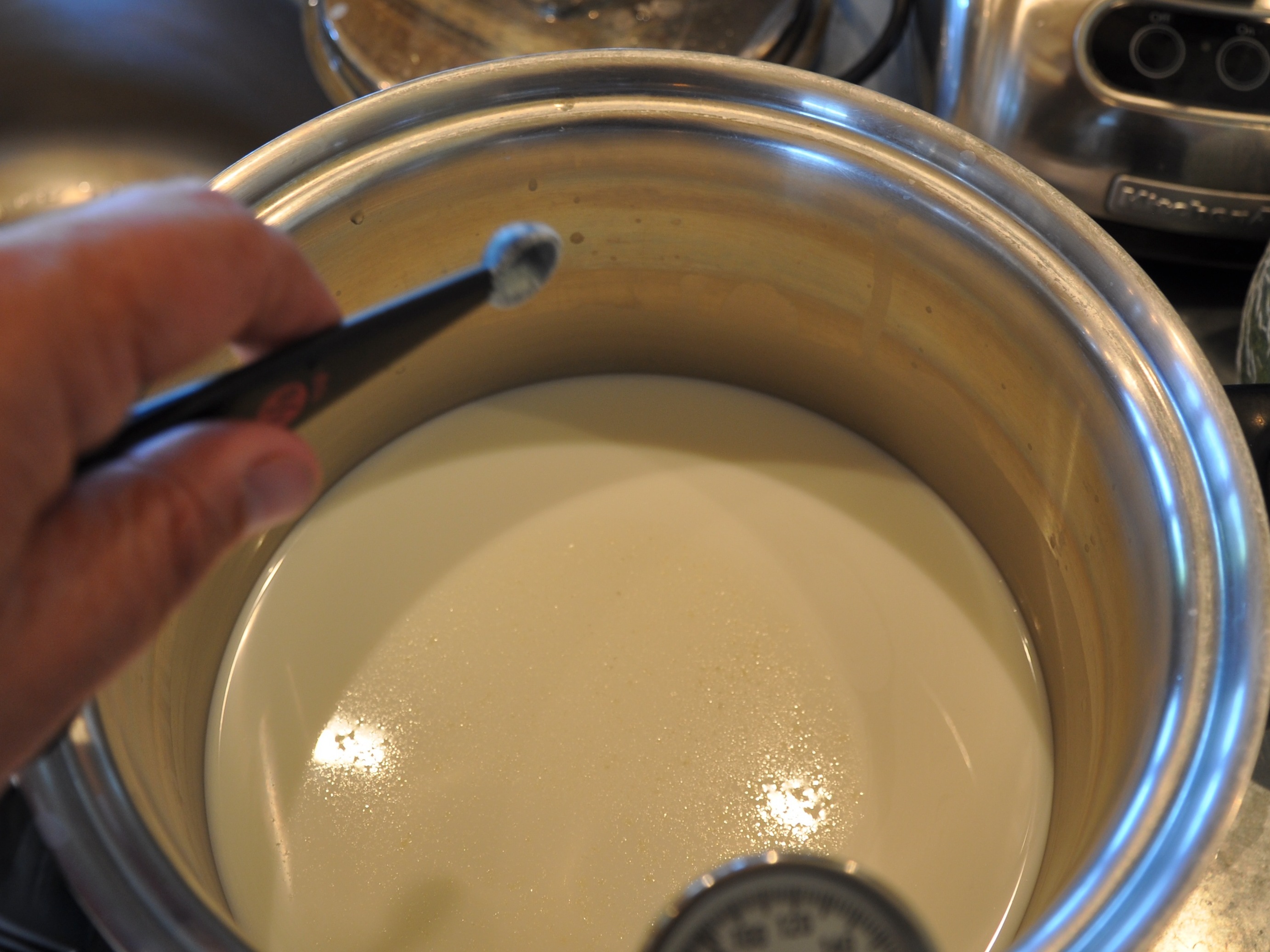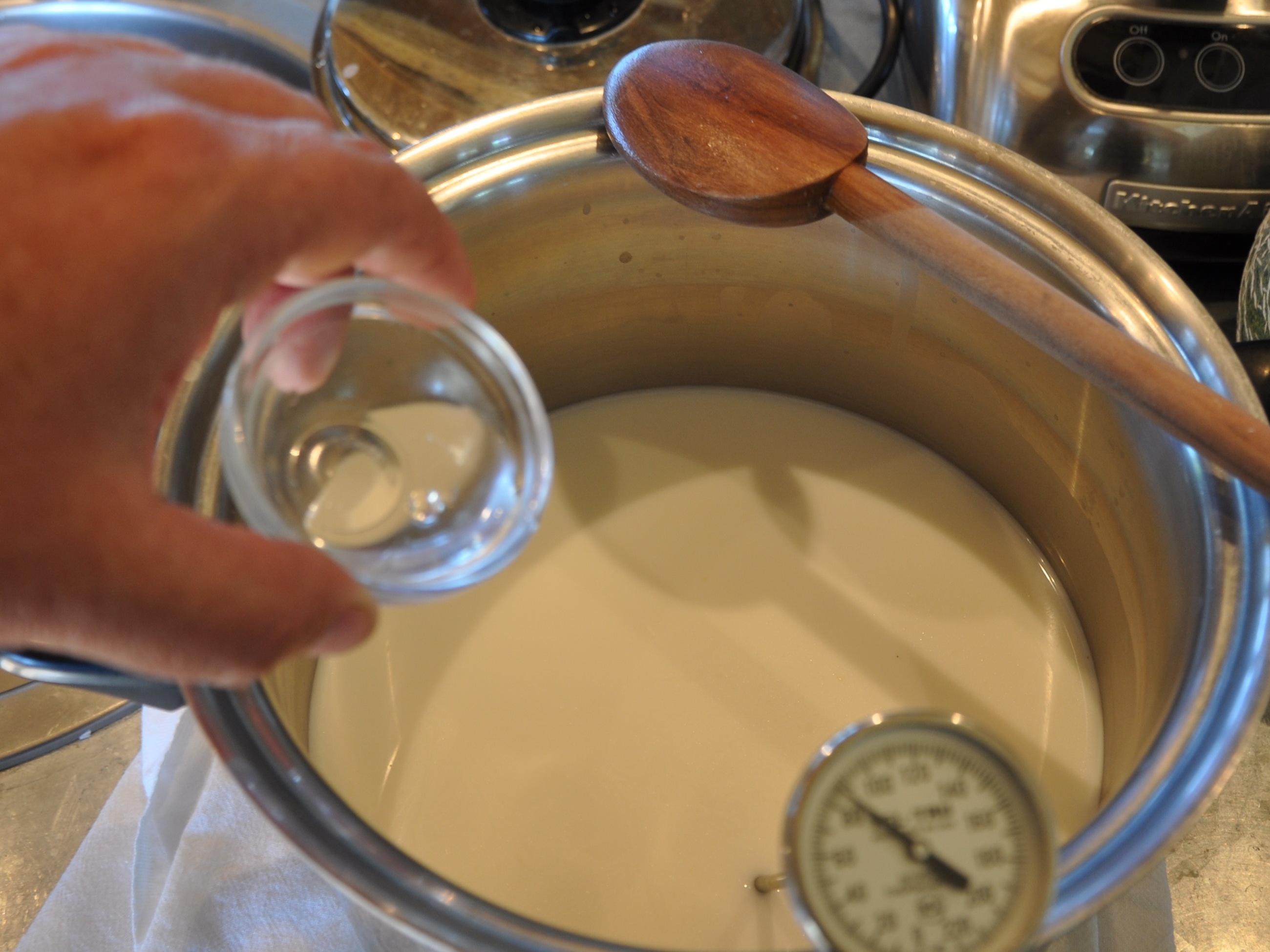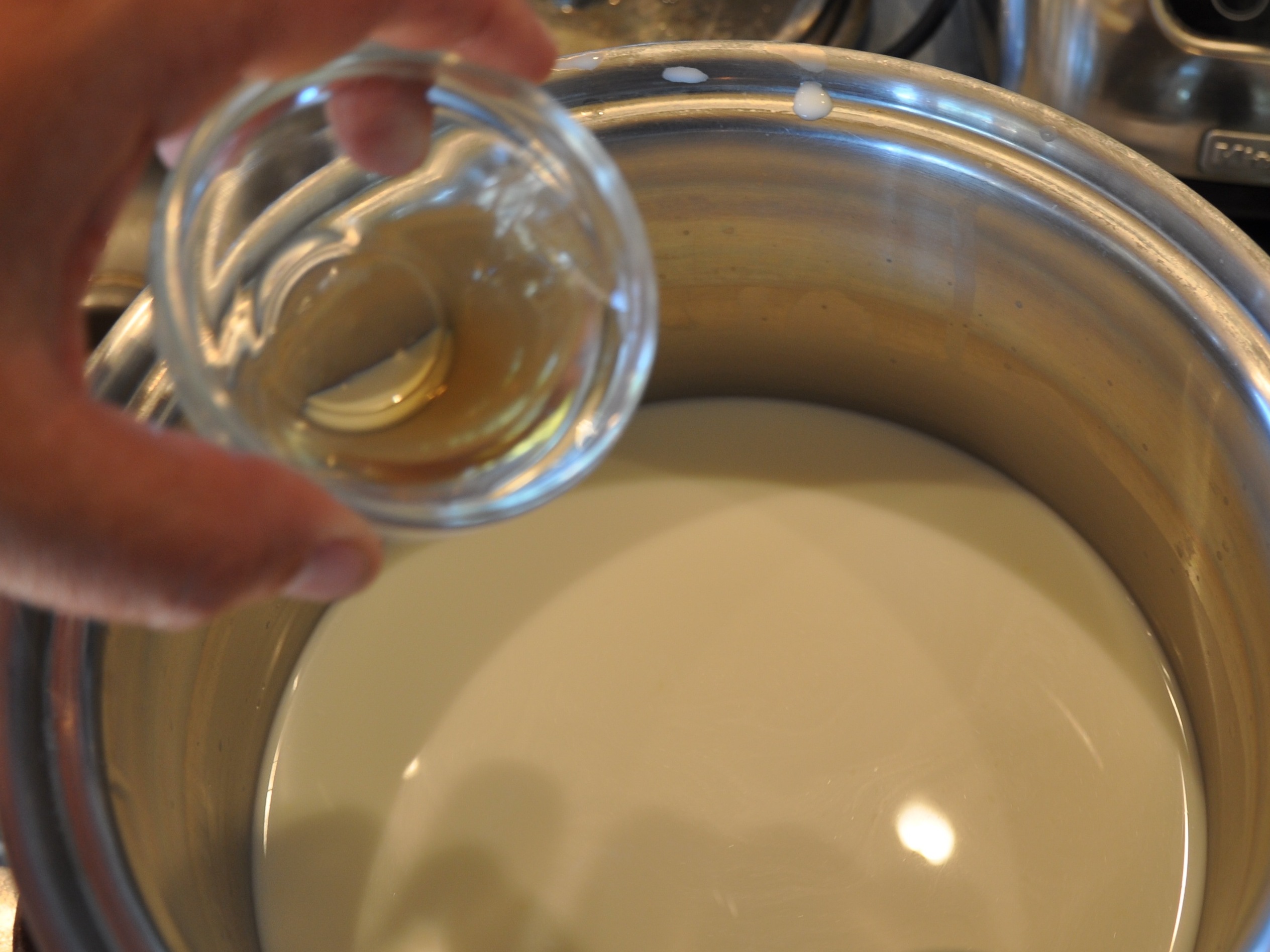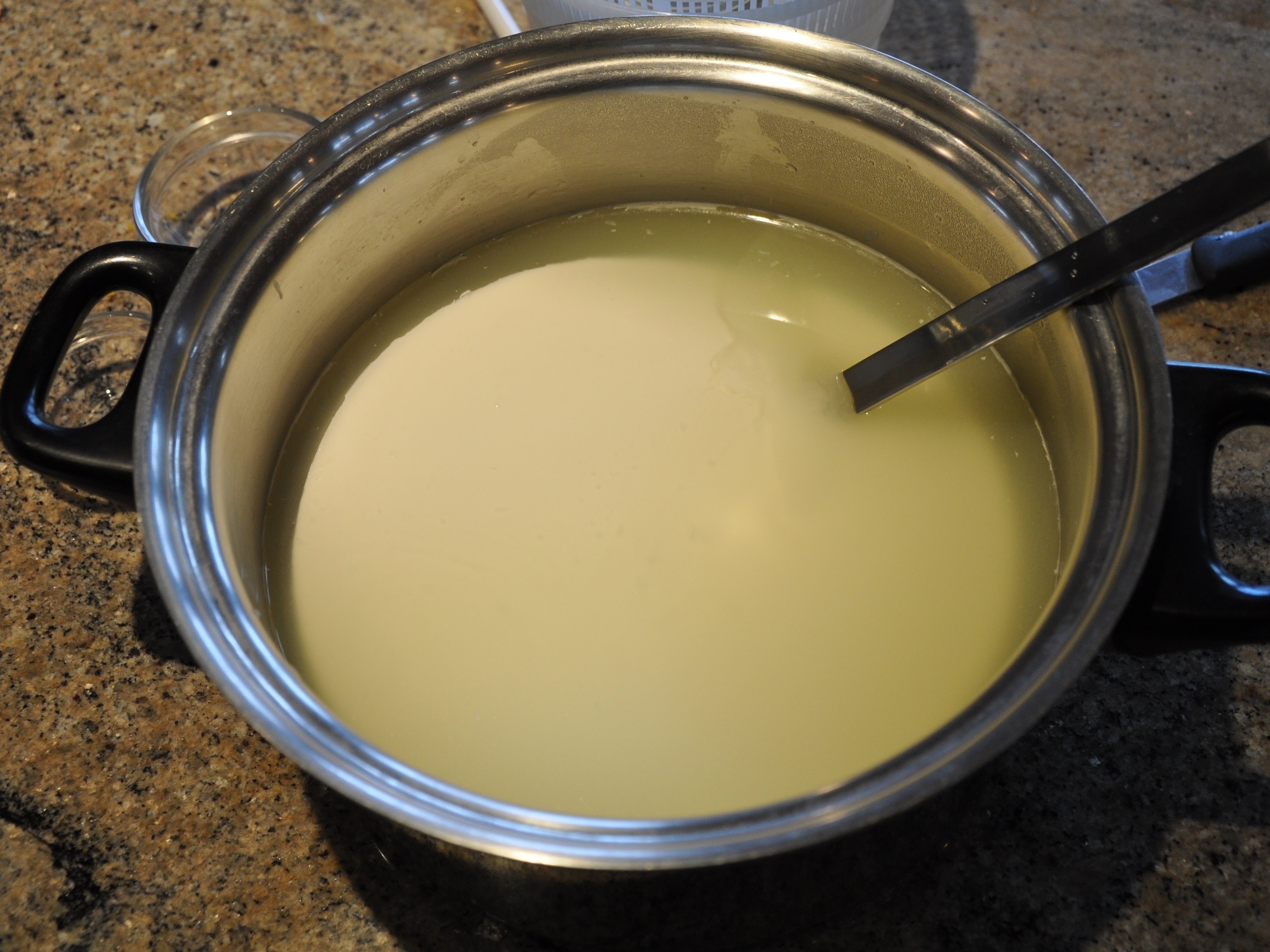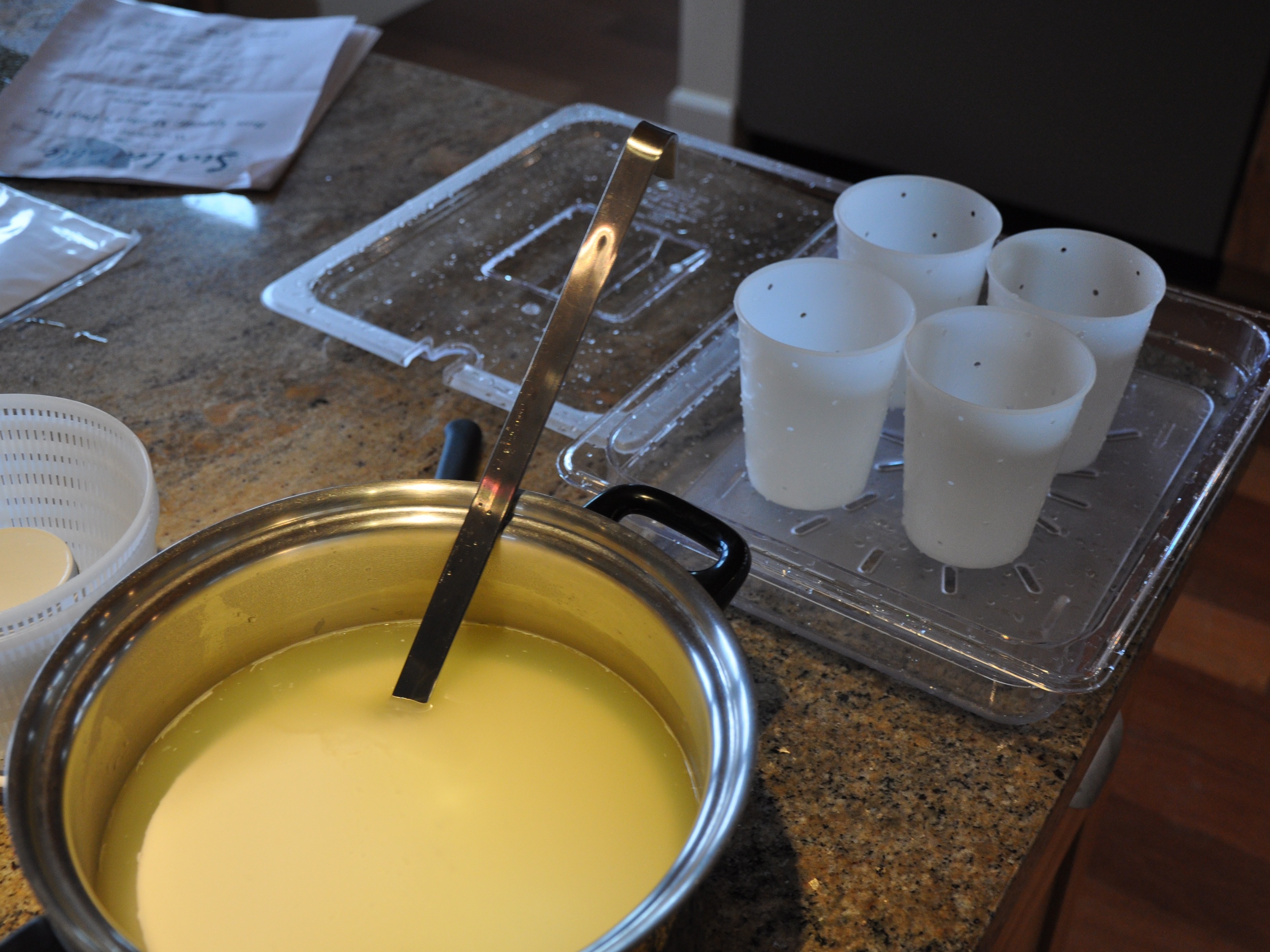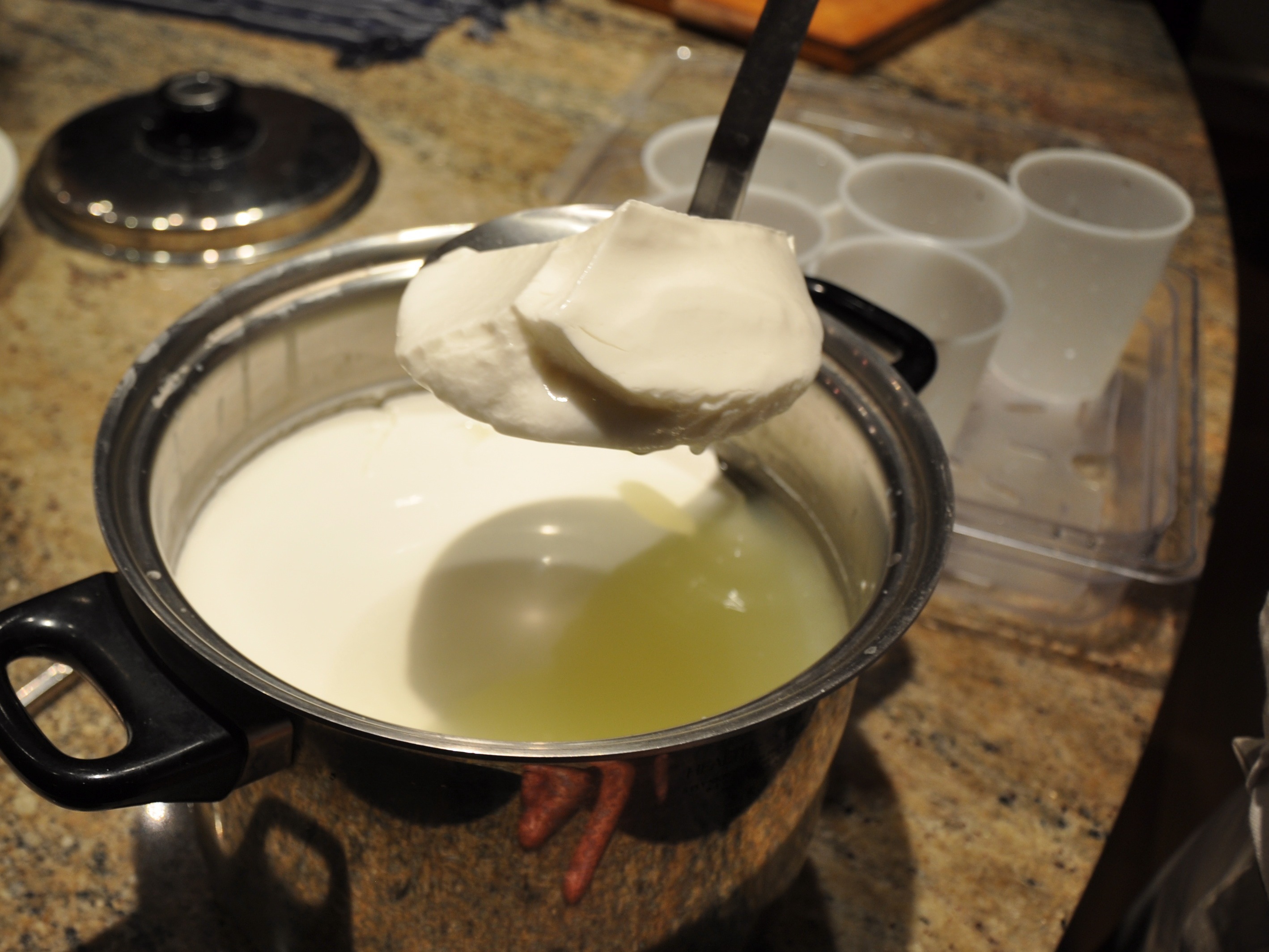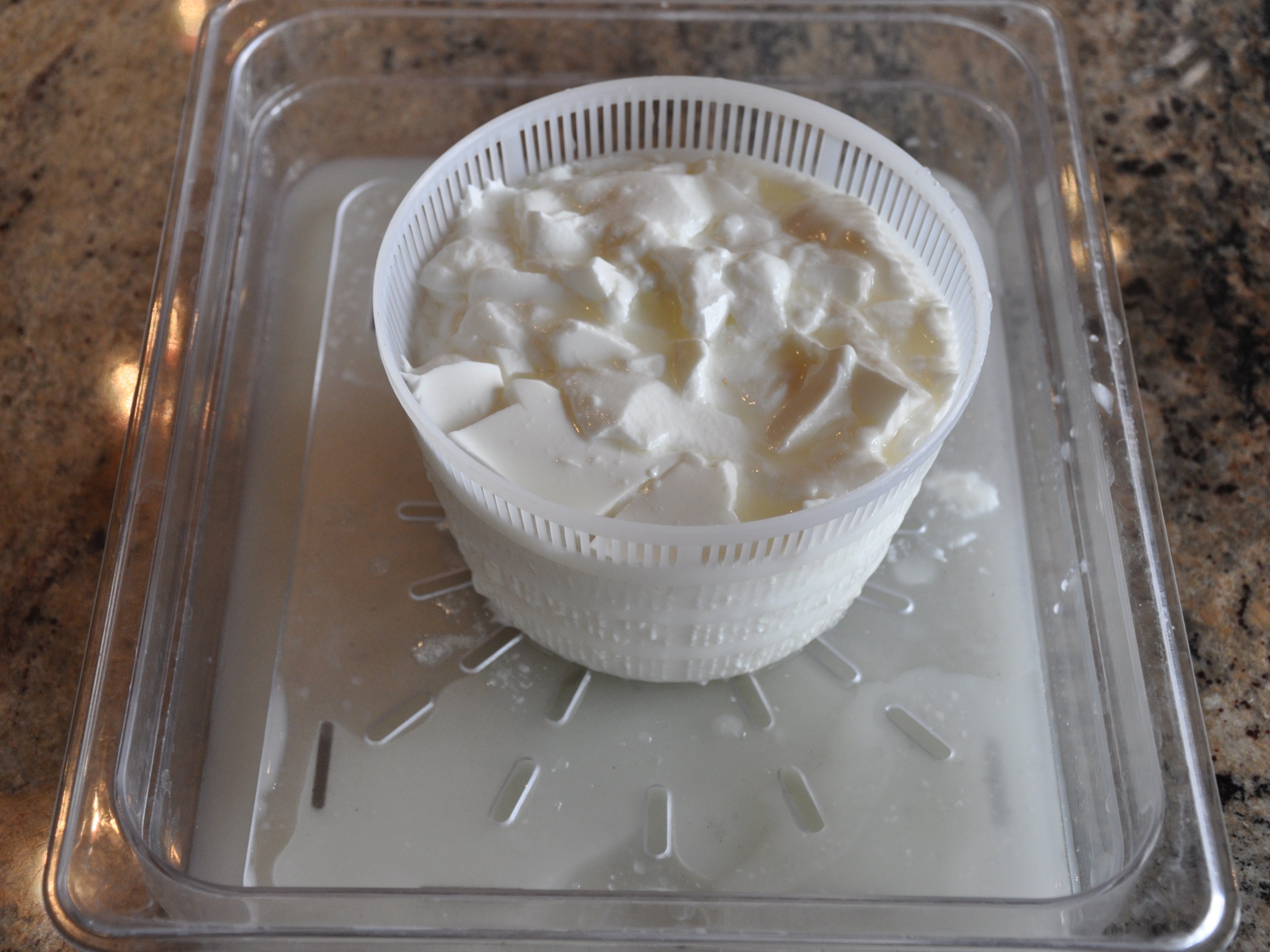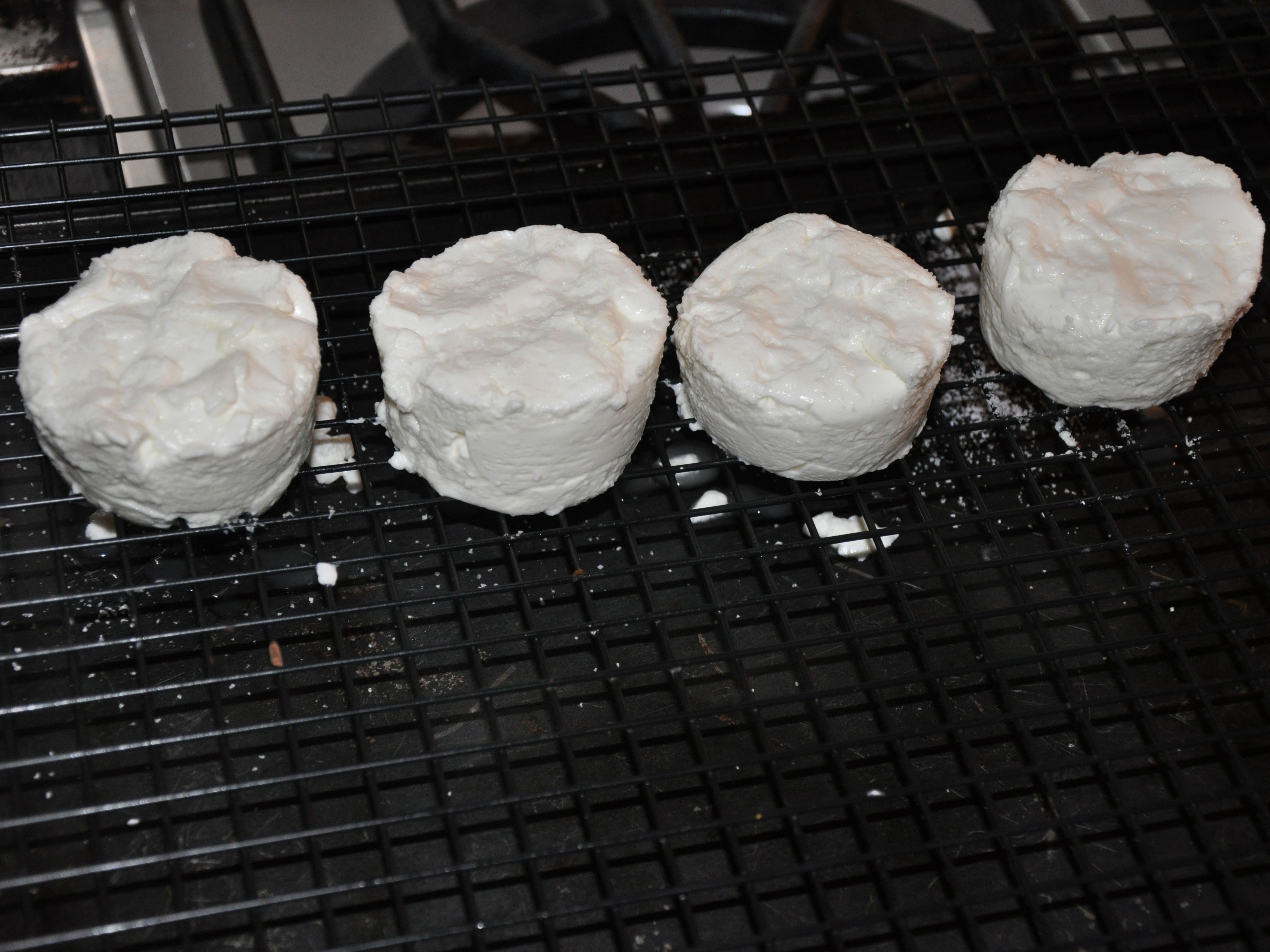To make fresh goat cheese, start with goat milk which can be bought from the store. Then, after warming the milk, add a cheese culture and mix in rennet. Rennet is what causes the curds to form and separate from the whey. In this recipe, it takes 12 hours for the curd to form a clean break. You can strain the curd into molds to drain or you can put it into a bag of cheesecloth and hang it over the sink.
This cheese is not aged, although it sits out to dry for 48 hours. Chevre has a nice fresh taste and a soft, spreadable texture. You can mix in herbs or simply sprinkle them on the outside of the cheese.
Cheesemaking Supplies
You’ll need some specialized supplies for cheesemaking, which you can find easily online. A local brewery supply store in my area carries cheesemaking equipment as well as the essential ingredients including the cultures and rennet. Rennet in liquid form seems to be preferred to rennet tablets and vegetarian rennet is preferred to animal rennet (from a lamb’s stomach).


